-
 246. Shared Wisdom: How Communication Defines Culture and Builds Community
246. Shared Wisdom: How Communication Defines Culture and Builds CommunityFrom 🇺🇸 Think Fast Talk Smart: Communication Techniques, published at 2025-11-27 14:00
Why good communication is the key to good communities.Community and communication go hand-in-hand. For Sandy Pentland, the culture and cohesion of any group “has to do with the stories [people] tell each other.”Pentland is a professor at MIT, where he helped create and direct the MIT Media Lab. As a pioneer in computational social science, he’s using data to map social networks and decode communication. In his latest book, Shared Wisdom: Cultural Evolution in the Age of AI, he explores the interplay between human culture, technological development, and societal change — arguing that communication is the tool that enables groups to achieve these advancements and to cohere throughout them. “Stories are the stuff of culture,” he says. “Sharing stories educates the community… defining the worldview and culture of that group.”In this episode of Think Fast, Talk Smart, Pentland and host Matt Abrahams explore what our communication patterns reveal about group dynamics and organizational health. From the “honest signals” in our interactions to strategies for strengthening remote work connections, Pentland shares how better communication can fuel more connected communities.Episode Reference Links:Sandy PentlandSandy’s Book: Shared WisdomEp.137 When Words Aren’t Enough: How to Excel at Nonverbal Communication Ep.65 Ties That Bind: Why Remote and Hybrid Teams Need the Right Connection Connect:Premium Signup >>>> Think Fast Talk Smart PremiumEmail Questions & Feedback >>> [email protected] Transcripts >>> Think Fast Talk Smart WebsiteNewsletter Signup + English Language Learning >>> FasterSmarter.ioThink Fast Talk Smart >>> LinkedIn, Instagram, YouTubeMatt Abrahams >>> LinkedInChapters:(00:00) - Introduction (02:21) - Honest Signals & Human Behavior (04:14) - The Sociometric Badge Research (05:44) - Human Connection in Remote Work (07:01) - Organizations as Networks (09:33) - How Ideas Spread in Groups (12:44) - Bringing the Right People Together (14:12) - Stories as Cultural DNA (16:55) - The Final Three Questions (22:01) - Conclusion ********Thank you to our sponsors. These partnerships support the ongoing production of the podcast, allowing us to bring it to you at no cost.Strawberry.me. Get 50% off your first coaching session today at Strawberry.me/smart
-
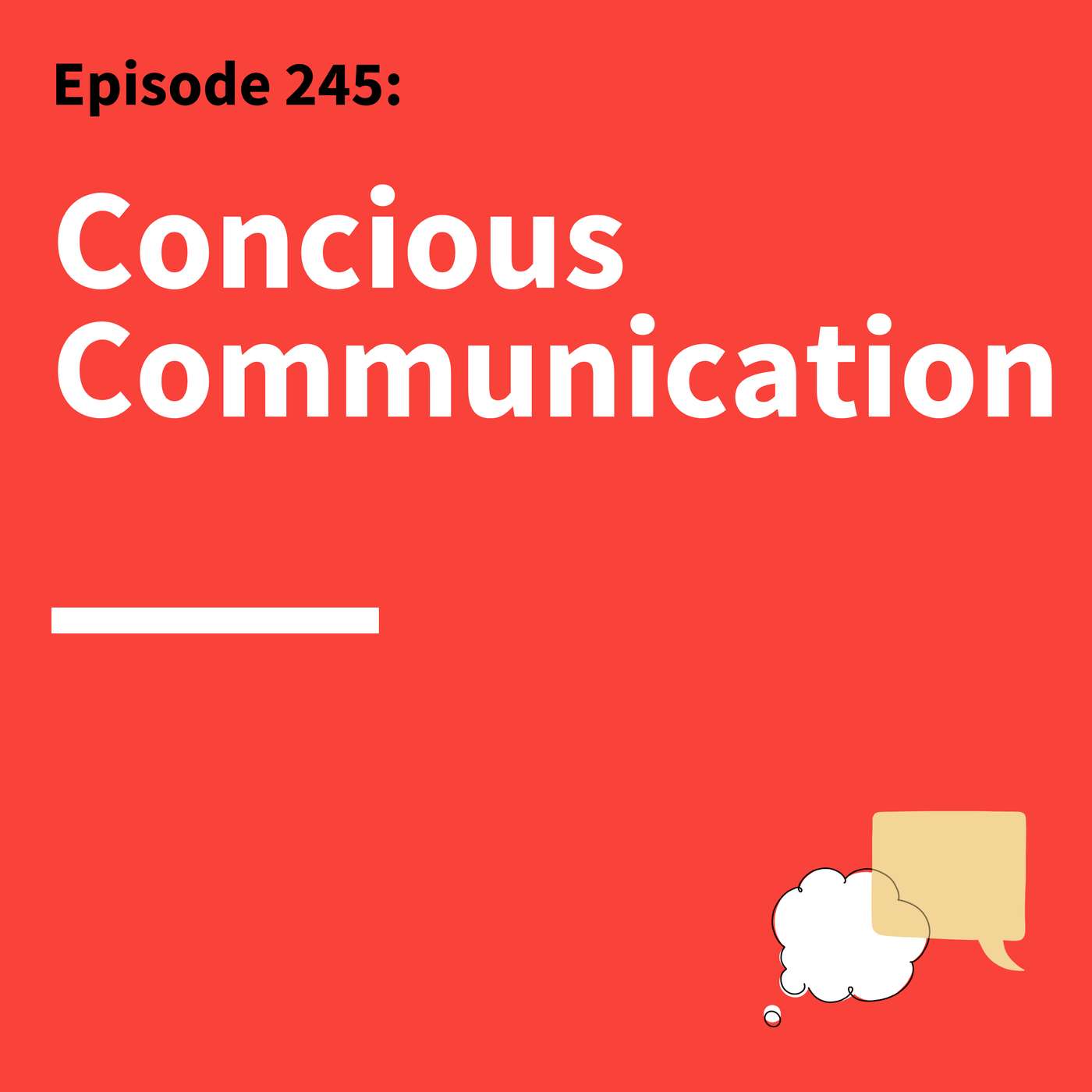 245. Mindful Messages: Leveraging the Power of Presence
245. Mindful Messages: Leveraging the Power of PresenceFrom 🇺🇸 Think Fast Talk Smart: Communication Techniques, published at 2025-11-25 14:00
When you enter a conflict trying to win, Deepak Chopra says you’ve already lost.“We can resolve any conflict,” says Dr. Deepak Chopra. All it takes is what he calls “conscious communication.”Chopra is a physician, a leading authority on integrative wellbeing, and the author of over 97 books. His “conscious communication” approach puts presence at the center of all meaningful interactions — bringing together attention, affection, appreciation, and acceptance. When applied to conflicts, his approach turns adversaries into collaborators, leading to what he calls "spiritual solutions" where diverse perspectives and problem-solving lead to better outcomes for all. “We can come up with a creative solution for any adversity,” he says. “All we want is the best outcome for everyone.”In this episode of Think Fast, Talk Smart, Chopra and host Matt Abrahams explore how presence transforms our interactions, why intentions enable us to accomplish more with less effort, and helpful questions to guide difficult conversations. Whether navigating conflict in our professional or personal lives, Chopra’s insights show why the best resolutions come when we stop trying to be right and start trying to understand.Episode Reference Links:Deepak ChopraDeepak Chopra AIEp.138 Speak Your Truth: Why Authenticity Leads to Better Communication Connect:Premium Signup >>>> Think Fast Talk Smart PremiumEmail Questions & Feedback >>> [email protected] Transcripts >>> Think Fast Talk Smart WebsiteNewsletter Signup + English Language Learning >>> FasterSmarter.ioThink Fast Talk Smart >>> LinkedIn, Instagram, YouTubeMatt Abrahams >>> LinkedInChapters:(00:00) - Introduction (02:31) - The Power of Presence (04:17) - Reframing Conflict (10:27) - The Role of Intention (12:27) - DeepakChopra.ai Explained (14:29) - The Final Three Question (19:19) - Conclusion ********Thank you to our sponsors. These partnerships support the ongoing production of the podcast, allowing us to bring it to you at no cost.Strawberry.me. Get 50% off your first coaching session today at Strawberry.me/smart
-
 244. Community Creates Change: Build Relationships That Actually Matter
244. Community Creates Change: Build Relationships That Actually MatterFrom 🇺🇸 Think Fast Talk Smart: Communication Techniques, published at 2025-11-20 14:00
Why community is the most powerful tool for transformation.Community isn't just a feel-good buzzword. According to Gina Bianchini, it's a catalyst for personal and collective transformation.Bianchini is the CEO and founder of community-building platform, Mighty Networks, and author of the book Purpose: Design a Community and Change Your Life. "Community is when people come together, and every single member has something to give and something to receive," she explains. In contrast to the one-directional dynamic of a speaker and their audience or a creator and their following, Bianchini argues that the power of community lies in two-way exchanges, where each member benefits the group and benefits from it. "Community is the single most effective way to get results and transformation you just can't get on your own," she says.In this episode of Think Fast, Talk Smart, Bianchini joins host Matt Abrahams to discuss how to unlock the potential of purposeful communities. She shares strategies for finding your tribe during times of transition, the "people magic” created when we facilitate deep connections, and how creating community enables us to create the world and lives we imagine.To listen to the extended Deep Thinks version of this episode, please visit FasterSmarter.io/premium.Episode Reference Links:Gina BianchiniGina’s Book: PurposeEp.174 Fix Meetings: Transform Gatherings Into Meaningful Moments Connect:Premium Signup >>>> Think Fast Talk Smart PremiumEmail Questions & Feedback >>> [email protected] Transcripts >>> Think Fast Talk Smart WebsiteNewsletter Signup + English Language Learning >>> FasterSmarter.ioThink Fast Talk Smart >>> LinkedIn, Instagram, YouTubeMatt Abrahams >>> LinkedInChapters:(00:00) - Introduction (02:15) - Defining Community vs. Audience (04:03) - Community as a Catalyst for Transformation (06:39) - Finding the Right Community (10:27) - The Future Story Framework (13:20) - People Magic & Facilitation (18:59) - The Final Three Questions (24:51) - Conclusion ********Thank you to our sponsors. These partnerships support the ongoing production of the podcast, allowing us to bring it to you at no cost.Strawberry.me. Get 50% off your first coaching session today at Strawberry.me/smart
-
 243. Rethinks: How Lessons from Neuroscience Can Help You Communicate Confidently
243. Rethinks: How Lessons from Neuroscience Can Help You Communicate ConfidentlyFrom 🇺🇸 Think Fast Talk Smart: Communication Techniques, published at 2025-11-17 14:00
Reduce speaking anxiety and achieve your communication goals.“There’s no difference between the physiological response to something that you’re excited about and something that you’re nervous about or dreading,” says Andrew Huberman, associate professor of neurobiology and ophthalmology at Stanford University.In this Think Fast Talk Smart Rethinks episode, we revisit one of our most popular interviews. In it, Huberman, from the wildly popular Huberman Lab Podcast, shares his research on the autonomic continuum, a spectrum between states of high alertness or fear all the way down to deep sleep, and shares how to use the system to your advantage. “If people can conceptualize that the anxiety or stress response is the same as the excitement response, they feel different,” Huberman says.Episode Reference Links:Andrew HubermanEp.33 Hacking your Speaking Anxiety: How Lessons from Neuroscience Can Help You Communicate Confidently Connect:Premium Signup >>>> Think Fast Talk Smart PremiumEmail Questions & Feedback >>> [email protected] Transcripts >>> Think Fast Talk Smart WebsiteNewsletter Signup + English Language Learning >>> FasterSmarter.ioThink Fast Talk Smart >>> LinkedIn, Instagram, YouTubeMatt Abrahams >>> LinkedInChapters:(00:00) - Introduction (02:48) - Stress & the Autonomic Continuum (04:56) - Controlling Alertness & Calmness (08:45) - Movement & Audience Perception (11:10) - Eye Movements for Anxiety Reduction (13:30) - Two Approaches to Managing Stress (18:14) - Preparing for Stress in Advance (20:16) - Effective Virtual Communication (22:18) - The Final Three Questions (27:20) - Conclusion ********Thank you to our sponsors. These partnerships support the ongoing production of the podcast, allowing us to bring it to you at no cost.Strawberry.me. Get 50% off your first coaching session today at Strawberry.me/smart
-
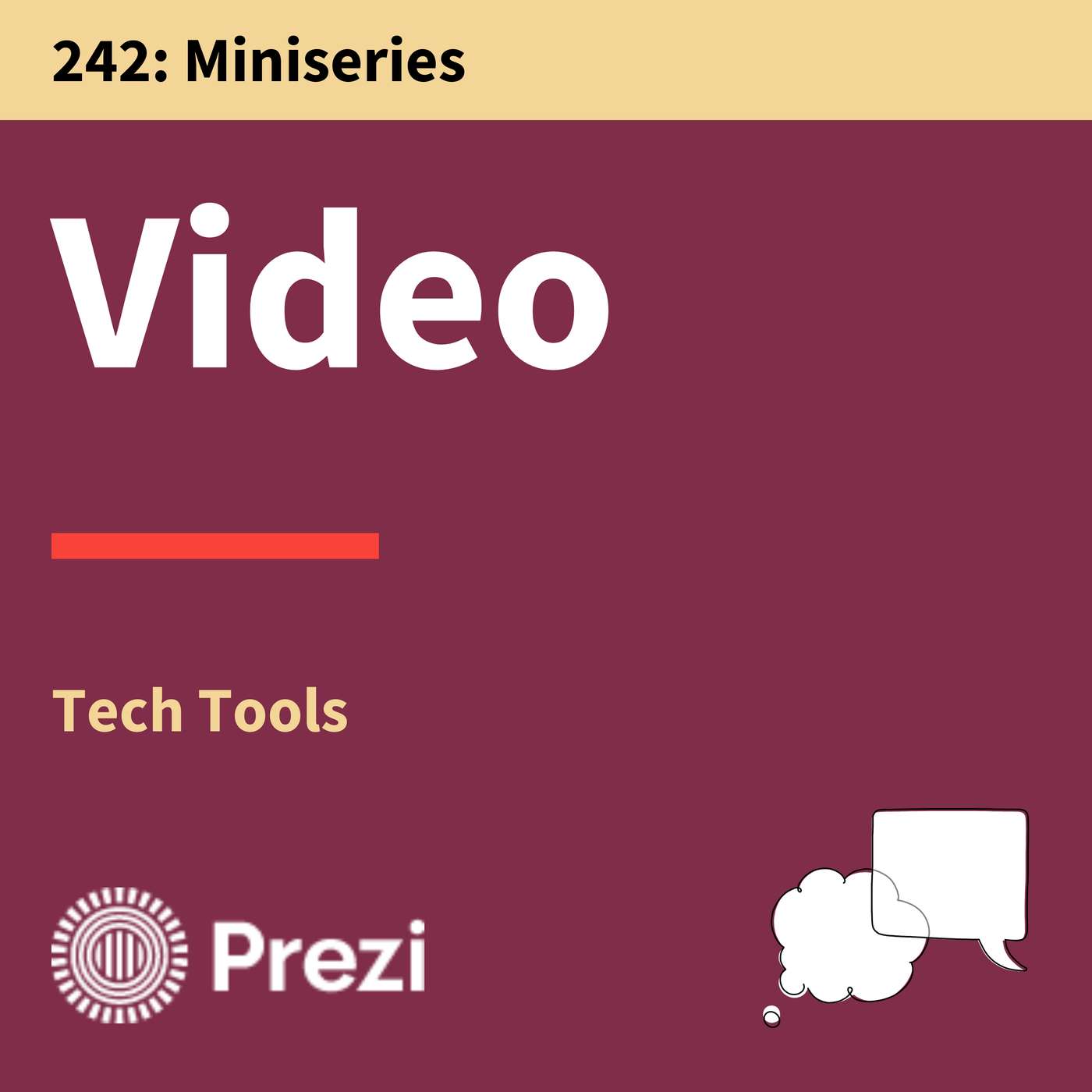 242. Tech Tools: The Power of Showing, Not Telling
242. Tech Tools: The Power of Showing, Not TellingFrom 🇺🇸 Think Fast Talk Smart: Communication Techniques, published at 2025-11-13 14:00
Transform how you communicate with tools that make your message stick.Sometimes the best way to explain an idea is to show it. That’s why Loom was built — to make communication more visual, authentic, and efficient. By combining video, screen sharing, and AI-powered editing, Loom helps teams connect and collaborate asynchronously, no matter where they are.In this episode of the Think Fast, Talk Smart Tech Tools miniseries, host Matt Abrahams talks with Joe Thomas, co-founder and CEO of Loom, now part of Atlassian, about how asynchronous video can make communication clearer, faster, and more personal. They discuss why “show, don’t tell” is such an effective communication principle, how authenticity builds trust, and why recording yourself might be one of the best ways to improve how you communicate.In addition to insight-packed discussions, this miniseries explores innovative tools that enhance the way we communicate and connect. Whether you want to make your presentations more memorable, craft stories that stick, or connect with your audience on a deeper level, these episodes will help you communicate with greater clarity, confidence, and impact.Episode Reference Links:Joe ThomasEp.227 Tech Tools: Move Your Audience By Moving Through Your PresentationEp.230 Tech Tools: Use Visuals to Your AdvantageEp.233 Tech Tools: Write with Confidence and ImpactEp.236 Tech Tools: Zeroing in on Your Email CommunicationEp.239 Tech Tools: How Smarter Scheduling Leads to Stronger Communication Connect:Premium Signup >>>> Think Fast Talk Smart PremiumEmail Questions & Feedback >>> [email protected] Transcripts >>> Think Fast Talk Smart WebsiteNewsletter Signup + English Language Learning >>> FasterSmarter.ioThink Fast Talk Smart >>> LinkedIn, Instagram, YouTubeMatt Abrahams >>> LinkedInChapters:(00:00) - Introduction (01:18) - Loom Elevator Pitch (02:27) - Creation of Loom (03:50) - Show, Don’t Tell: Using Video Effectively (08:42) - Favorite Communicator (09:46) - Communication Hack or Tool (12:49) - Conclusion *******Thank you to our sponsors. These partnerships support the ongoing production of the podcast, allowing us to bring it to you at no cost.Try Prezi today and get 25% off exclusively at prezi.com/thinkfast.
-
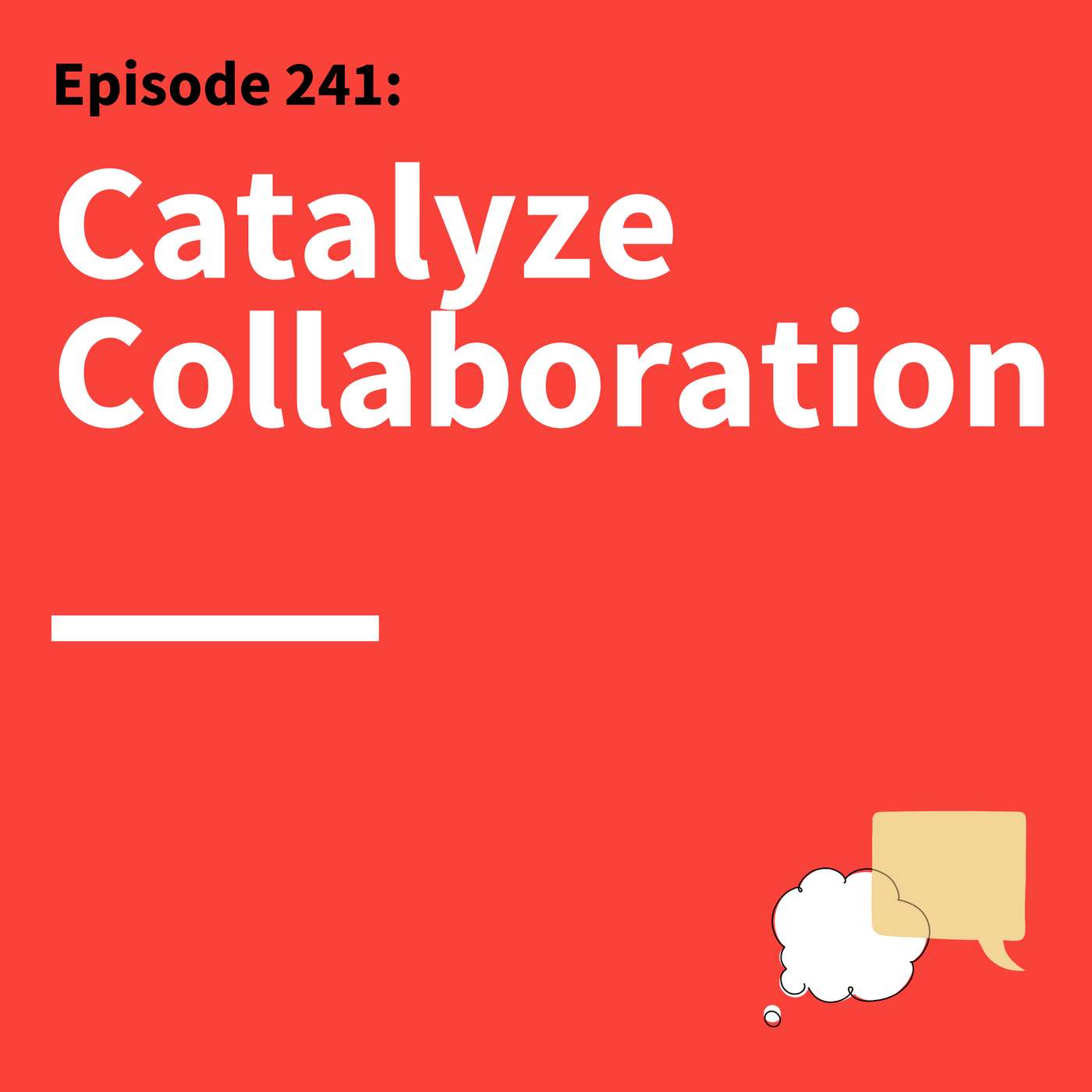 241. Team Spirit: How to Make Group Work Work
241. Team Spirit: How to Make Group Work WorkFrom 🇺🇸 Think Fast Talk Smart: Communication Techniques, published at 2025-11-11 14:00
How to unlock the power of groups through collective communication.They say teamwork makes the dream work. But as Colin Fisher knows, unlocking the power of groups requires a specific kind of collective communication.Fisher is an associate professor of organizations and innovation at University College London School of Management and author of The Collective Edge: Unlocking the Secret Power of Groups. His research reveals the dichotomy of group dynamics: "Groups can be the pinnacle of human accomplishment," he says. "But groups also have these tendencies to restrict us, to take away our individuality, and to sometimes make us the worst versions of ourselves.” The key, he argues, is fostering communication that maximizes the creative synergy of collaboration while minimizing the pressure to conform.In this episode of Think Fast, Talk Smart, Fisher joins host Matt Abrahams to share evidence-based strategies for effective teamwork, from selecting the ideal group size to fostering psychological safety. Whether with our coworkers, our families, or our friends, Fisher’s insights reveal how collective communication can make or break group success.To listen to the extended Deep Thinks version of this episode, please visit FasterSmarter.io/premium.Episode Reference Links:Colin FisherColin’s Book: The Collective EdgeEp.174 Fix Meetings: Transform Gatherings Into Meaningful MomentsEp.124 Making Meetings Meaningful Pt. 1: How to Structure and Organize More Effective Gatherings Connect:Premium Signup >>>> Think Fast Talk Smart PremiumEmail Questions & Feedback >>> [email protected] Transcripts >>> Think Fast Talk Smart WebsiteNewsletter Signup + English Language Learning >>> FasterSmarter.ioThink Fast Talk Smart >>> LinkedIn, Instagram, YouTubeMatt Abrahams >>> LinkedInChapters:(00:00) - Introduction (02:26) - Advantages and Disadvantages of Groups (04:00) - What Makes Teams Successful (05:44) - The Ideal Group Size (06:40) - Building Psychological Safety (08:56) - Launching a Team for Success (13:17) - Making Meetings More Effective (16:32) - The Final Three Questions (22:46) - Conclusion ********Thank you to our sponsors. These partnerships support the ongoing production of the podcast, allowing us to bring it to you at no cost.Strawberry.me. Get 50% off your first coaching session today at Strawberry.me/smart
-
 240. Belief It or Not: How to Rewrite the Narratives That Hold You Back
240. Belief It or Not: How to Rewrite the Narratives That Hold You BackFrom 🇺🇸 Think Fast Talk Smart: Communication Techniques, published at 2025-11-04 14:00
How to identify and rewrite the limiting beliefs holding you back.Achieving what you want in life doesn’t just hinge on what you believe about your future. According to Muriel Wilkins, it has just as much to do with what you believe about your past and present.Wilkins is an executive coach, author, and host of the HBR podcast Coaching Real Leaders. In her new book, Leadership Unblocked: Breakthrough the Beliefs that Limit Your Potential, she explains how our personal and professional blocks often stem from our own limiting beliefs about ourselves. “A belief is a story that you tell yourself,” she says, “It is the operating principle that is driving your behavior and the decisions you make.” Before we can take actions that will lead us to where we want to go, we have to uncover these hidden beliefs. Otherwise, Wilkins says, “We'll come back right to where we started. It's not just about what we do, it's about what we think about what we do that makes all the difference."In this episode of Think Fast, Talk Smart, Wilkins and host Matt Abrahams explore the three-step process of uncover, unpack, and unblock — Wilkins’ method for identifying limiting beliefs, understanding how they might be shaping our behavior, and updating narratives to align with who we actually want to be.To listen to the extended Deep Thinks version of this episode, please visit FasterSmarter.io/premium.Episode Reference Links:Muriel WilkinsMuriel’s Book: Leadership UnblockedEp.102 Create a Presence: How to Communicate in a Way Others Can FeelEp.98 Give It to Me Straight: How to Give Honest, Constructive Feedback Connect:Premium Signup >>>> Think Fast Talk Smart PremiumEmail Questions & Feedback >>> [email protected] Transcripts >>> Think Fast Talk Smart WebsiteNewsletter Signup + English Language Learning >>> FasterSmarter.ioThink Fast Talk Smart >>> LinkedIn, Instagram, YouTubeMatt Abrahams >>> LinkedInChapters:(00:00) - Introduction (02:18) - The Seven Limiting Beliefs (04:44) - Three Steps to Becoming Unblocked (07:58) - Rethinking Values and Success (09:13) - Healthy vs. Toxic Productivity (11:57) - The Power of Mindset and Reframing (14:33) - Reverse Engineering Your Goals (17:42) - Managing Emotional Investment (21:22) - The Final Three Question (27:07) - Conclusion ********Thank you to our sponsors. These partnerships support the ongoing production of the podcast, allowing us to bring it to you at no cost.This episode is brought to you by Babbel. Think Fast Talk Smart listeners can get started on your language learning journey today- visit Babbel.com/Thinkfast and get up to 55% off your Babbel subscription.
-
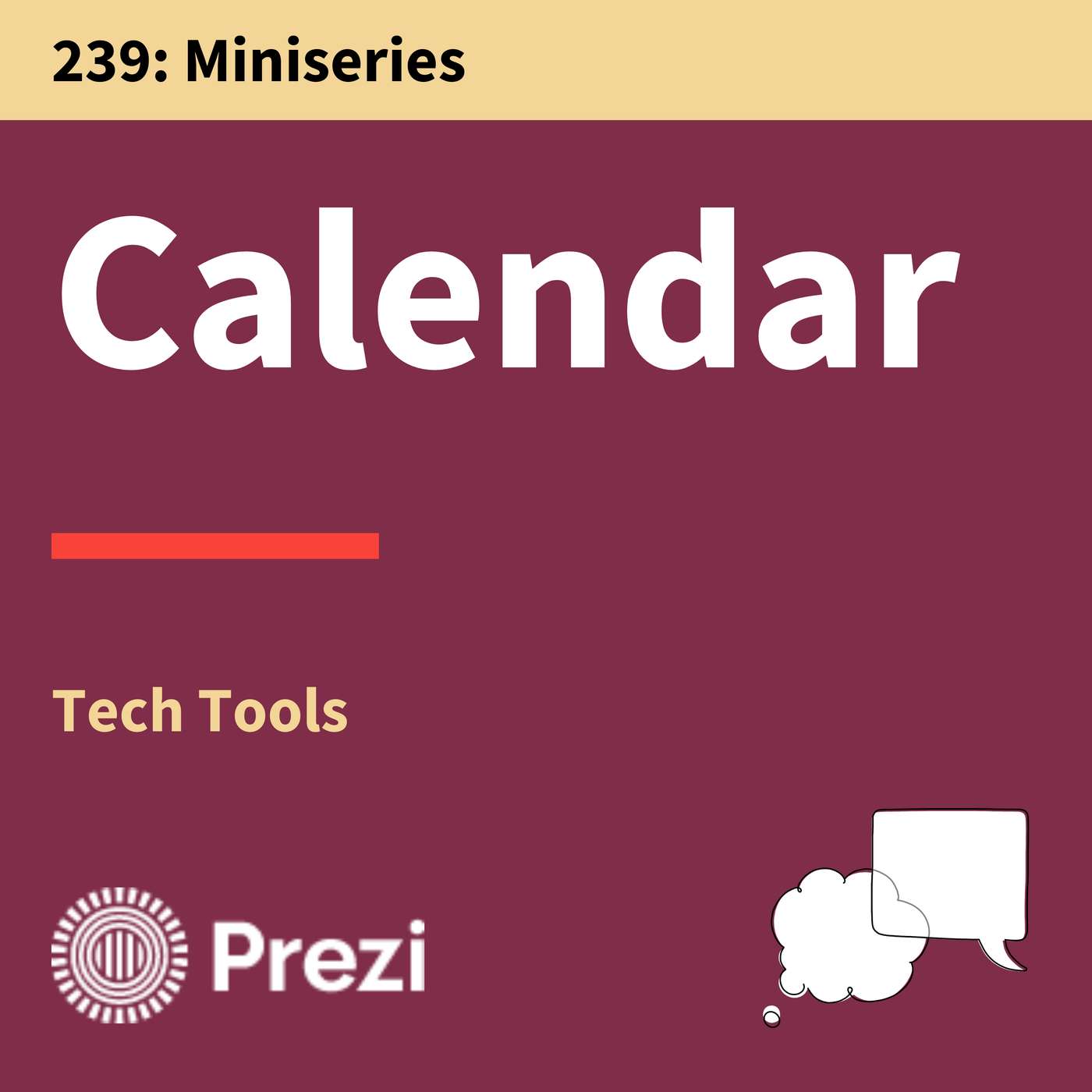 239. Tech Tools: How Smarter Scheduling Leads to Stronger Communication
239. Tech Tools: How Smarter Scheduling Leads to Stronger CommunicationFrom 🇺🇸 Think Fast Talk Smart: Communication Techniques, published at 2025-10-30 13:00
Transform how you communicate with tools that make your message stick.Meetings are where collaboration happens — but too often, scheduling them feels like the biggest barrier to meaningful connection. That’s why Calendly was created: to simplify scheduling and make time for what truly matters — the conversation itself.In this episode of the Think Fast, Talk Smart Tech Tools miniseries, host Matt Abrahams talks with Calendly’s Vice President of Growth, Darren Chait, about how intentional scheduling leads to better communication, stronger relationships, and more productive meetings. They explore how data-driven insights can improve collaboration, reduce burnout, and help teams make every meeting count.In addition to insight-packed discussions, this miniseries explores innovative tools that enhance the way we communicate and connect. Whether you want to make your presentations more memorable, craft stories that stick, or connect with your audience on a deeper level, these episodes will help you communicate with greater clarity, confidence, and impact.Episode Reference Links:Darren ChaitE.227 Tech Tools: Move Your Audience By Moving Through Your Presentation Ep.230 Tech Tools: Use Visuals to Your Advantage Ep.233 Tech Tools: Write with Confidence and Impact Ep.236 Tech Tools: Zeroing in on Your Email Communication Connect:Premium Signup >>>> Think Fast Talk Smart PremiumEmail Questions & Feedback >>> [email protected] Transcripts >>> Think Fast Talk Smart WebsiteNewsletter Signup + English Language Learning >>> FasterSmarter.ioThink Fast Talk Smart >>> LinkedIn, Instagram, YouTubeMatt Abrahams >>> LinkedInChapters:(00:00) - Introduction (01:12) - Calendly Elevator Pitch (02:47) - The Origin of Calendly (04:44) - The Art of Intentional Scheduling (06:33) - Making Meetings More Effective (07:30) - Favorite Communicator (09:40) - Communication Hack or Tool (11:45) - Conclusion *******Thank you to our sponsors. These partnerships support the ongoing production of the podcast, allowing us to bring it to you at no cost.Try Prezi today and get 25% off exclusively at prezi.com/thinkfast.
-
 238. AMA: Why Listening Might Be Your Most Powerful Skill
238. AMA: Why Listening Might Be Your Most Powerful SkillFrom 🇺🇸 Think Fast Talk Smart: Communication Techniques, published at 2025-10-28 13:00
When we truly listen, every conversation changes — including the one with ourselves.Listening isn’t about waiting for your turn to speak — it’s about being present enough to truly hear. In a world full of noise, slowing down to listen can feel like a radical act. Yet it’s in those moments of stillness and attention that real understanding begins.In this special Ask Matt Anything episode of Think Fast, Talk Smart, we explore what it means to “listen up” — to engage with intention, empathy, and curiosity. Along the way, listener questions spark insights on how to slow down fast conversations, apply communication tools in real life, and navigate the nuances of culture and connection. Because better communication doesn’t start with what we say — it starts with what we hear.To listen to the extended Deep Thinks version of this episode, please visit FasterSmarter.io/premium.Episode Reference Links:Ep.17 Think Fast: You Asked, We AnsweredEp.114 Communication Means Paying Attention: The Four Pillars of Active ListeningAsk Matt Anything (AMA) 1: Trust, Paraphrasing, and Nonverbal Cues Connect:Premium Signup >>>> Think Fast Talk Smart PremiumEmail Questions & Feedback >>> [email protected] Transcripts >>> Think Fast Talk Smart WebsiteNewsletter Signup + English Language Learning >>> FasterSmarter.ioThink Fast Talk Smart >>> LinkedIn, Instagram, YouTubeMatt Abrahams >>> LinkedInChapters:(00:00) - Introduction (02:42) - The Three Ps That Block Good Listening (03:39) - Ace Your Listening: Pace, Space, and Grace (05:59) - Listening Beyond Words: Nonverbal Cues That Matter (06:37) - Listening Through Paraphrasing (08:13) - Practicing Better Listening (09:30) - Choosing the Right Structure for Your Audience (12:55) - Applying Communication Skills Effectively (16:02) - Slowing Down Conversations (20:39) - Practicing and Getting Feedback (23:09) - What’s Next for Think Fast Talk Smart (25:01) - Conclusion ********Thank you to our sponsors. These partnerships support the ongoing production of the podcast, allowing us to bring it to you at no cost.Strawberry.me. Get 50% off your first coaching session today at Strawberry.me/smart
-
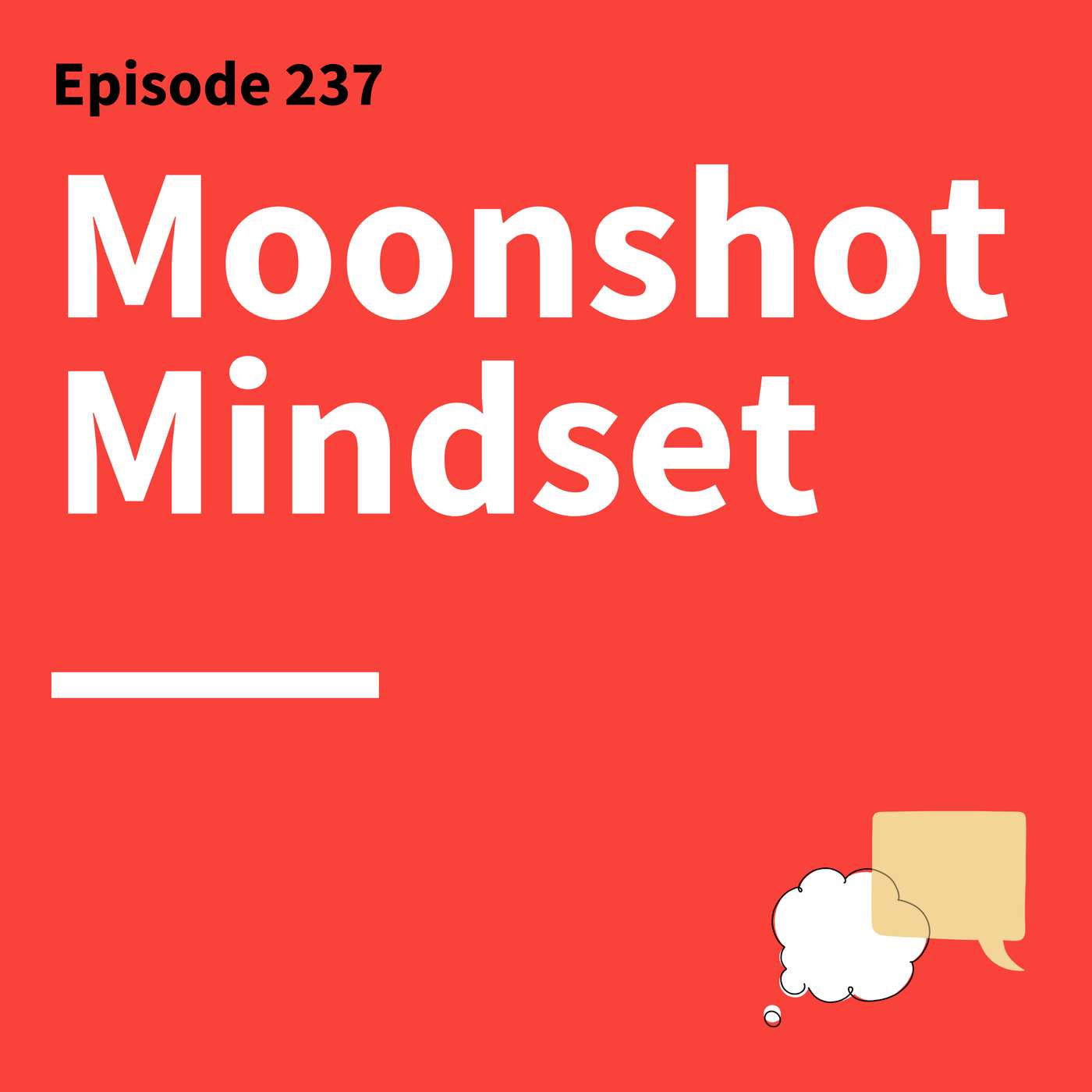 237. Mistake It Till You Make It: Learn Faster and Fail Smarter
237. Mistake It Till You Make It: Learn Faster and Fail SmarterFrom 🇺🇸 Think Fast Talk Smart: Communication Techniques, published at 2025-10-21 13:00
Why we learn the most when we accept that we might be wrong.Effective communication isn’t about having all the answers. As Astro Teller knows, it’s about finding (and sometimes fumbling) your way through the questions.Teller is a computer scientist, entrepreneur, and inventor who serves as Captain of Moonshots at X, Alphabet's Moonshot Factory. In his work leading teams toward audacious solutions to seemingly unsolvable problems, he embraces what he calls “a learning journey,” where being wrong isn’t the end, but the beginning. “As scary as it is to be wrong,” he says, it’s a necessary part of the discovery process. Whether experimenting in the lab or testing our thoughts and opinions in conversation with others, it’s about having the humility and curiosity to face the limits of our understanding. “When do you learn something? You learn something when you have a model about the world, and then you get some data that tells you you're wrong,” he says. “You learn nothing when you're right.”In this episode of Think Fast, Talk Smart, Teller and host Matt Abrahams discuss how embracing uncertainty drives innovation, why leaders should reward learning habits over outcomes, and how we learn the most when we’re not afraid to find that we might be wrong.To listen to the extended Deep Thinks version of this episode, please visit FasterSmarter.io/premium.Episode Reference Links:Astro TellerAstro’s Book: Sacred Cows Ep.70 Ideas Fuel Innovation: Why Your First Ideas Aren’t Always the Best Ep.20 Question Your Questions: How to Spark Creativity in Your Communication Connect:Premium Signup >>>> Think Fast Talk Smart PremiumEmail Questions & Feedback >>> [email protected] Transcripts >>> Think Fast Talk Smart WebsiteNewsletter Signup + English Language Learning >>> FasterSmarter.ioThink Fast Talk Smart >>> LinkedIn, Instagram, YouTubeMatt Abrahams >>> LinkedInChapters:(00:00) - Introduction (02:23) - Defining a Moonshot (04:26) - Building a Learning Machine (07:05) - Learning vs. Productivity (08:40) - Capturing and Sharing Learning (10:54) - Rewarding Habits, Not Outcomes (13:22) - Moonshot Success Stories (16:21) - The Power of Storytelling in Innovation (17:51) - Launching The Moonshot Podcast (19:42) - The Final Three Questions (25:39) - Conclusion ********Thank you to our sponsors. These partnerships support the ongoing production of the podcast, allowing us to bring it to you at no cost.Strawberry.me. Get 50% off your first coaching session today at Strawberry.me/smart
-
 236. Tech Tools: Zeroing in on Your Email Communication
236. Tech Tools: Zeroing in on Your Email CommunicationFrom 🇺🇸 Think Fast Talk Smart: Communication Techniques, published at 2025-10-16 13:00
Transform how you communicate with tools that make your message stick.Staying on top of communication starts with staying in control of your inbox. That’s why Rahul Vohra, founder and CEO of Superhuman, believes that how we manage email directly shapes how we manage our time, focus, and relationships.For years, Superhuman has helped professionals reach Inbox Zero faster — reducing email overload and reclaiming time for what truly matters. In this episode of the Think Fast, Talk Smart Tech Tools miniseries, host Matt Abrahams talks with Vohra about the philosophy behind Inbox Zero, how better systems lead to clearer communication, and why mindfulness and intentional design can make us more effective communicators.In addition to insight-packed discussions, this miniseries explores innovative tools that enhance the way we communicate and connect. Whether you want to make your presentations more memorable, craft stories that stick, or connect with your audience on a deeper level, these episodes will help you communicate with greater clarity, confidence, and impact.Episode Reference Links:Rahul VohraEp.227 Tech Tools: Move Your Audience By Moving Through Your Presentation Ep.230 Tech Tools: Use Visuals to Your Advantage Ep.233 Tech Tools: Write with Confidence and Impact Connect:Premium Signup >>>> Think Fast Talk Smart PremiumEmail Questions & Feedback >>> [email protected] Transcripts >>> Think Fast Talk Smart WebsiteNewsletter Signup + English Language Learning >>> FasterSmarter.ioThink Fast Talk Smart >>> LinkedIn, Instagram, YouTubeMatt Abrahams >>> LinkedInChapters:(00:00) - Introduction (01:18) - The Philosophy Behind Inbox Zero (04:19) - The Superhuman Elevator Pitch (05:50) - The Origin of Superhuman (09:02) - Favorite Communicator (10:05) - Communication Hack or Tool (11:47) - Conclusion *******Thank you to our sponsors. These partnerships support the ongoing production of the podcast, allowing us to bring it to you at no cost.Try Prezi today and get 25% off exclusively at prezi.com/thinkfast.
-
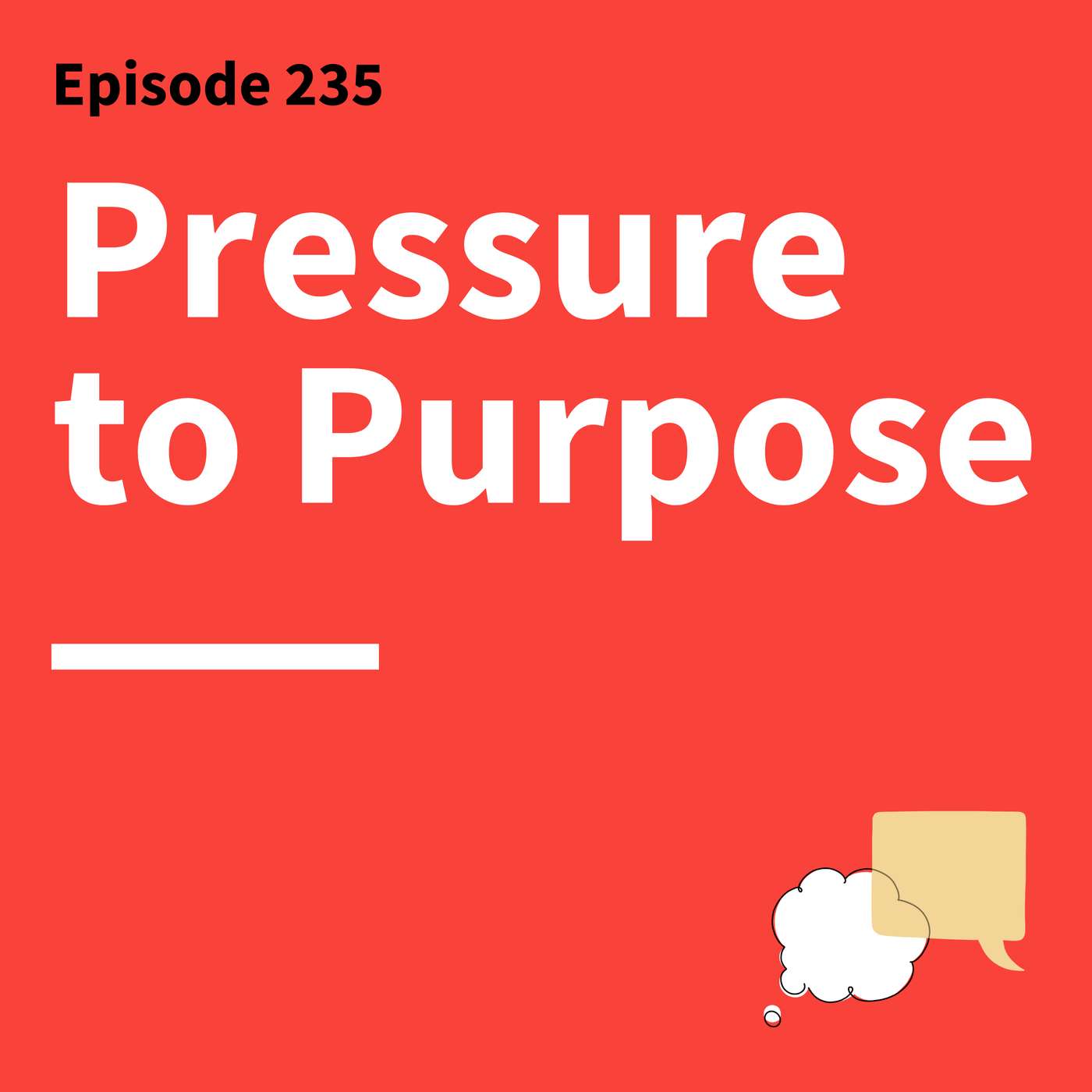 235. Refine, Reframe, Repeat: Make Your Communication a Slam Dunk
235. Refine, Reframe, Repeat: Make Your Communication a Slam DunkFrom 🇺🇸 Think Fast Talk Smart: Communication Techniques, published at 2025-10-14 13:00
The road to mastery is paved with small improvements every day.Communicating can feel daunting at times. What does it take to find your voice in the moments that matter most? As Chiney Ogwumike says, “There is freedom on the other side of your fear.”As a professional basketball player, NBA and WNBA analyst for ESPN, and advocate for gender equality in sports, Ogwumike faces many situations where communication is critical. For her, achieving confidence in communication is the same as honing any other skill—embracing failure and refinement through repetition. “The best things in life are things you work out over long periods of time,” she says. “Great people, great communicators, anyone that's working at something, show up each and every day and just chip away, chip away, chip away, until they turn that weakness into a strength.”In this episode of Think Fast, Talk Smart, Ogwumike and host Matt Abrahams discuss how practice and preparation can equip us for better communication, transforming fear into confidence, perfectionism into authenticity, and weakness into strength.To listen to the extended Deep Thinks version of this episode, please visit FasterSmarter.io/premium.Episode Reference Links:Chiney OgwumikeEp.166 Why Relying on Talent Alone Will Fail You Ep.153 Listen Up, Leaders: A Record-Setting Coach’s Guide to Communication Connect:Premium Signup >>>> Think Fast Talk Smart PremiumEmail Questions & Feedback >>> [email protected] Transcripts >>> Think Fast Talk Smart WebsiteNewsletter Signup + English Language Learning >>> FasterSmarter.ioThink Fast Talk Smart >>> LinkedIn, Instagram, YouTubeMatt Abrahams >>> LinkedInChapters:(00:00) - Introduction (02:19) - Communication on the Court (04:01) - Performing Under Pressure (06:10) - Lessons from Great Coaches (08:20) - Embracing Imperfection and Authenticity (11:42) - Strategies for Effective On-Air Communication (16:22) - The Final Three Questions (19:15) - Conclusion ********Thank you to our sponsors. These partnerships support the ongoing production of the podcast, allowing us to bring it to you at no cost.Strawberry.me. Get 50% off your first coaching session today at Strawberry.me/smart
-
 234. Need to Know: Lead With Transparency, Character, and Silence
234. Need to Know: Lead With Transparency, Character, and SilenceFrom 🇺🇸 Think Fast Talk Smart: Communication Techniques, published at 2025-10-07 13:00
When it comes to leading a team, there’s no such thing as too much information.Good leadership is about good communication. And for General Stanley McChrystal, that means creating a culture of free-flowing information: “The goal is to have everyone know everything all the time,” he says.McChrystal is a retired four-star general, former commander of US and international forces in Afghanistan, and a renowned leadership expert. In his experience building cohesive teams in complex environments, he’s discovered that successful teams are built on a “shared consciousness [where] all have a common contextual understanding of what the situation is.” The key to creating that kind of culture, he says, is radical transparency — from leaders and subordinates alike. Whatever your position, “You are responsible for informing other people of things that they need to know,” he says.In this episode of Think Fast, Talk Smart, McChrystal and host Matt Abrahams discuss how to build shared consciousness within teams, how to communicate across cultural divides, and how to lead with clarity, context, and character.To listen to the extended Deep Thinks version of this episode, please visit FasterSmarter.io/premium.Episode Reference Links:General Stanley McChrystalGeneral McChrystal’s Books: On Character / Team of Teams155. Can We Be Candid? How to Communicate Clearly and Directly161. Do Your Homework: Know What to Say by Knowing Who You’re Talking To Connect:Premium Signup >>>> Think Fast Talk Smart PremiumEmail Questions & Feedback >>> [email protected] Transcripts >>> Think Fast Talk Smart WebsiteNewsletter Signup + English Language Learning >>> FasterSmarter.ioThink Fast Talk Smart >>> LinkedIn, Instagram, YouTubeMatt Abrahams >>> LinkedInChapters:(00:00) - Introduction (02:29) - Building Shared Consciousness (06:39) - Leading Across Differences (08:19) - Delivering Difficult News (10:44) - Communicating in a Virtual World (16:43) - Character as an Iterative Practice (18:53) - The Final Three Questions (23:26) - Conclusion ********Thank you to our sponsors. These partnerships support the ongoing production of the podcast, allowing us to bring it to you at no cost.Strawberry.me. Get 50% off your first coaching session today at Strawberry.me/smart
-
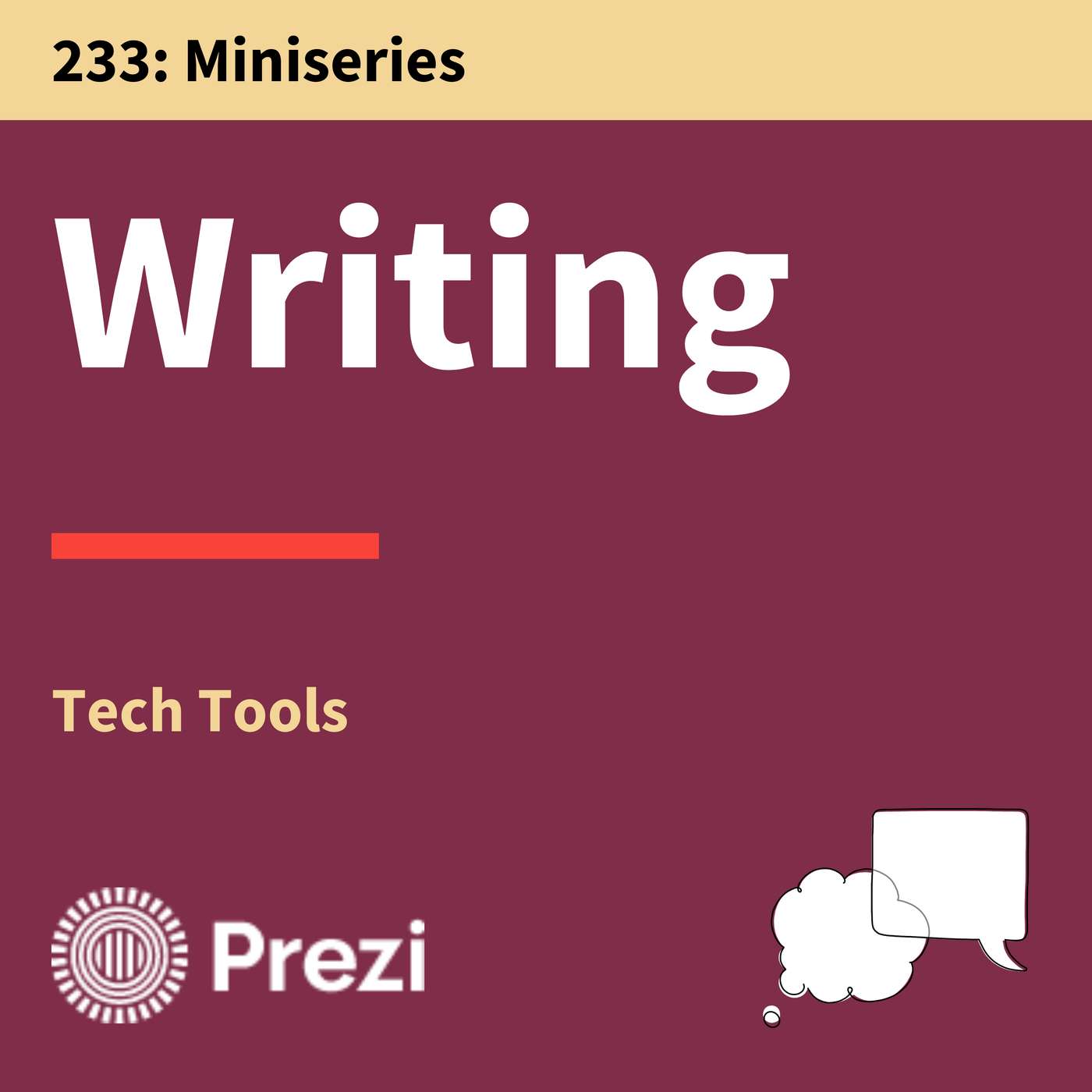 233. Tech Tools: Write with Confidence and Impact
233. Tech Tools: Write with Confidence and ImpactFrom 🇺🇸 Think Fast Talk Smart: Communication Techniques, published at 2025-10-02 13:00
Transform how you communicate with tools that make your message stick.Clarity is the cornerstone of great communication—but turning your thoughts into words isn’t always simple. That’s why Grammarly exists: to help you express yourself with confidence and precision, no matter the context.For over a decade, Grammarly has helped millions of people improve their writing, from everyday emails to high-stakes professional communications. In this episode of the Think Fast, Talk Smart Tech Tools miniseries, host Matt Abrahams talks with Grammarly co-founder Max Lytvyn about the origins of the tool, how AI is shaping the future of writing, and why starting with your goal is the key to effective communication.In addition to insight-packed discussions, this miniseries explores innovative tools that enhance the way we communicate and connect. Whether you want to make your presentations more memorable, craft stories that stick, or connect with your audience on a deeper level, these episodes will help you communicate with greater clarity, confidence, and impact.Episode Reference Links:Max Lytvyn Ep.227 Tech Tools: Move Your Audience By Moving Through Your Presentation Ep.230 Tech Tools: Use Visuals to Your Advantage Connect:Premium Signup >>>> Think Fast Talk Smart PremiumEmail Questions & Feedback >>> [email protected] Transcripts >>> Think Fast Talk Smart WebsiteNewsletter Signup + English Language Learning >>> FasterSmarter.ioThink Fast Talk Smart >>> LinkedIn, Instagram, YouTubeMatt Abrahams >>> LinkedInChapters:(00:00) - Introduction (01:14) - The Origins of Grammarly (02:50) - Grammarly Elevator Structure (04:54) - Lessons on Improving Writing (07:11) - Favorite Communicator (08:08) - Communication Hack or Tool (11:02) - Conclusion *******Thank you to our sponsors. These partnerships support the ongoing production of the podcast, allowing us to bring it to you at no cost.Try Prezi today and get 25% off exclusively at prezi.com/thinkfast.
-
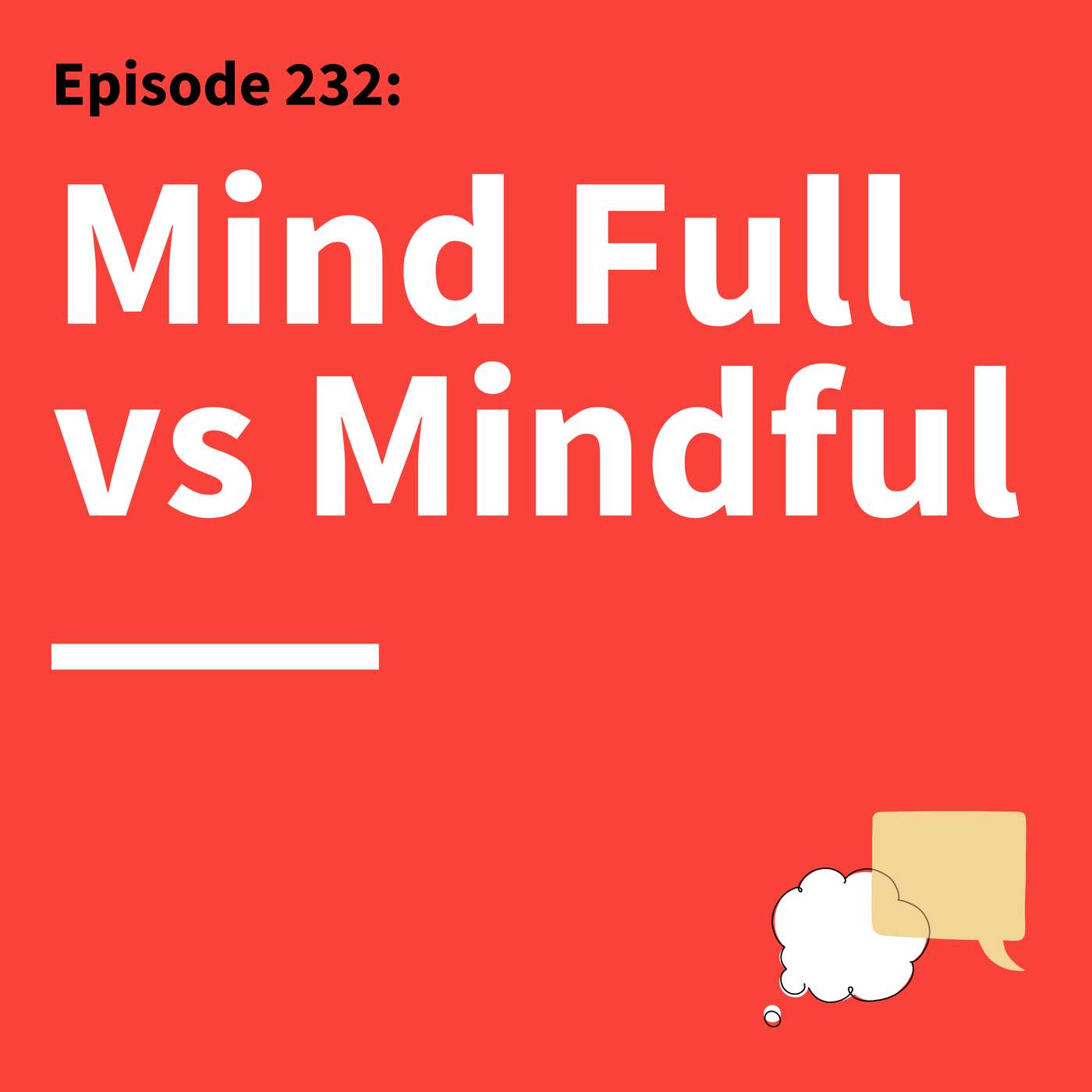 232. Pause, Don’t Panic: Finding Calm in High-Stakes Moments
232. Pause, Don’t Panic: Finding Calm in High-Stakes MomentsFrom 🇺🇸 Think Fast Talk Smart: Communication Techniques, published at 2025-09-29 13:00
To connect with others, you have to get out of your own head.Whether presenting to millions on live television or talking to just one person, Dan Harris knows that the quality of every interaction depends on the presence you bring to it.Harris is a former national news anchor for ABC News and is now the host of the 10% Happier podcast and author of 10% Happier and Meditation for Fidgety Skeptics. As he knows from experience, there’s power in “Waking up to something fundamental, that the mind is out of control, and you don't want to be owned by it.” How do we break the pattern of being controlled by our thoughts? Mindfulness and self-awareness, he says, put “distance” between us and our “thoughts and urges and emotions,” enabling us to connect with ourselves and others with greater consciousness and clarity.In this episode of Think Fast, Talk Smart, Harris and host Matt Abrahams discuss how mindfulness can transform our communication, sharing strategies for deeper listening, responding versus reacting, and reflecting what others say back to them. “Relationships are the most important aspect of your happiness,” Harris says. The quality of those connections goes up when “you’re “less stuck in your own head.”Episode Reference Links:Dan HarrisDan’s Books: 10% Happier / Meditation for Fidgety Skeptics Ep.179 Finding Positive in Negative Emotions: Communication, Happiness & Wellbeing Ep.180 Unlocking Your Future Self: Communication, Happiness & Wellbeing Ep.181 Why Happiness is a Direction, Not a Destination: Communication, Happiness & Wellbeing Ep.182 Stop Chasing Time and Start Owning It: Communication, Happiness & Wellbeing Connect:Premium Signup >>>> Think Fast Talk Smart PremiumEmail Questions & Feedback >>> [email protected] Transcripts >>> Think Fast Talk Smart WebsiteNewsletter Signup + English Language Learning >>> FasterSmarter.ioThink Fast Talk Smart >>> LinkedIn, Instagram, YouTubeMatt Abrahams >>> LinkedInChapters:(00:00) - Introduction (02:11) - On-Air Panic Attack (03:19) - Managing Communication Anxiety (04:21) - Nervousness Before Live Audiences (06:08) - Meditation Misconceptions (09:56) - Responding vs. Reacting (12:27) - Mindfulness & Productivity (15:31) - Lessons from Interviewing (17:39) - The Final Three Question (25:12) - Conclusion ********Thank you to our sponsors. These partnerships support the ongoing production of the podcast, allowing us to bring it to you at no cost.Strawberry.me. Get 50% off your first coaching session today at Strawberry.me/smart
-
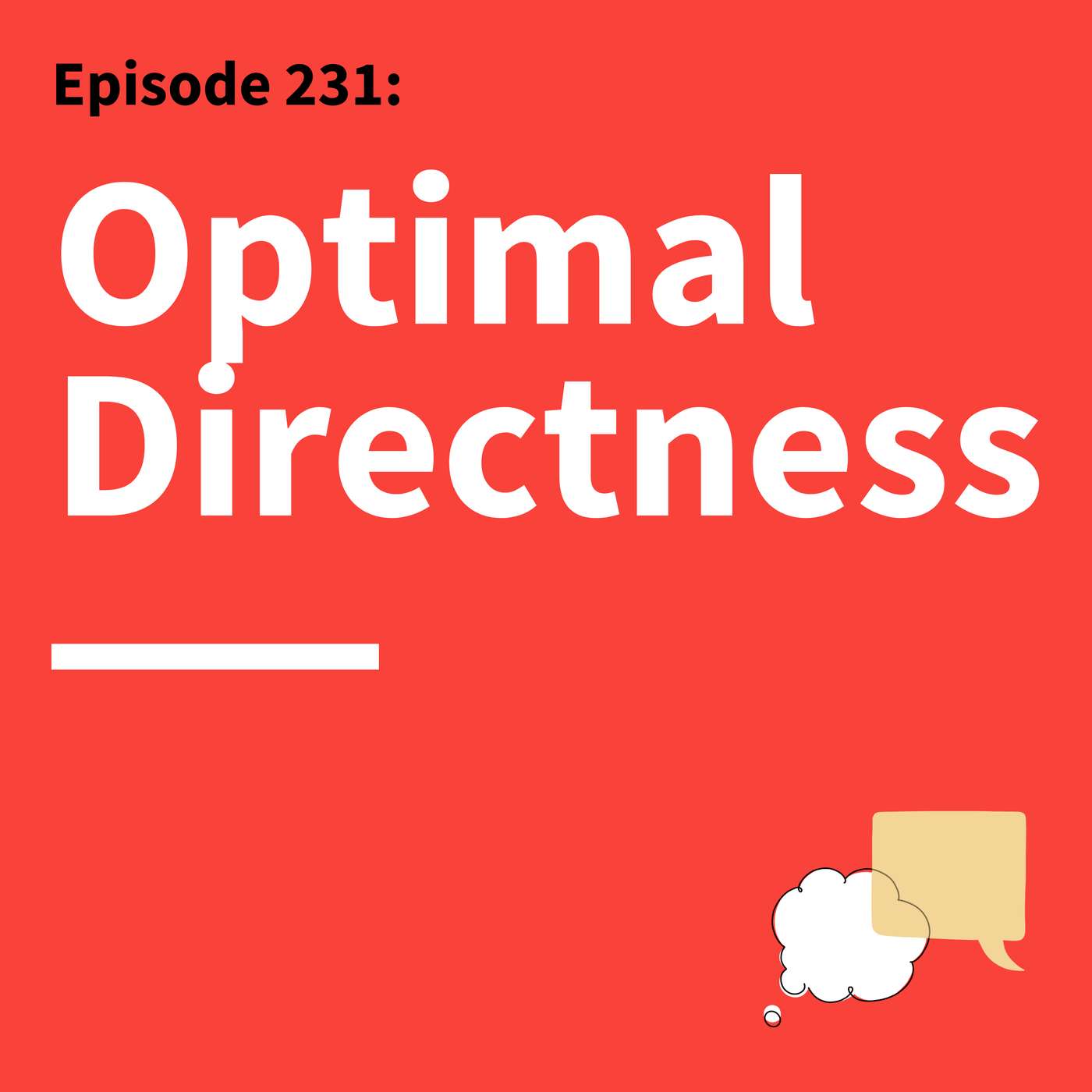 231. Secret Signals: Why We Rarely Say Exactly What We Mean
231. Secret Signals: Why We Rarely Say Exactly What We MeanFrom 🇺🇸 Think Fast Talk Smart: Communication Techniques, published at 2025-09-23 13:00
Why what isn’t said can communicate more than what is spoken.We often speak in hints and half-truths, not because we can’t be direct, but because subtlety protects our relationships. “An awful lot of the time, we don’t just blurt out what we mean,” says Steven Pinker. “We hint, we wink, we beat around the bush — counting on our listener to read between the lines, connect the dots, catch our drift.”Pinker is the Johnstone Professor of Psychology at Harvard University, a celebrated linguist and cognitive scientist, and the author of twelve influential books. His latest, When Everyone Knows That Everyone Knows: Common Knowledge and the Mysteries of Money, Power, and Everyday Life, explores how our shared understanding of awareness — what Steven refers to as common knowledge — and the way we signal it, governs everything from friendships to authority to negotiations. “Common knowledge is what ratifies or annuls social relationships, and that's why blurting something out that contradicts the assumptions of the relationship can blow everything up and be deeply awkward.” In this episode of Think Fast, Talk Smart, Pinker joins host Matt Abrahams to discuss why humans lean on innuendo, euphemism, and strategic ambiguity. They examine how culture and context shape what we hear, why our social fabric depends on more than just literal meaning, and offer practical ways to refine our communication by paying attention not just to what we say, but to what others know we know.To listen to the extended Deep Thinks version of this episode, please visit FasterSmarter.io/premium.Episode Reference Links:Steven PinkerSteven’s Book: When Everyone Knows That Everyone KnowsEp.91 Um, Like, So: How Filler Words Can Create More Connected, Effective CommunicationEp.225 Speaking Fluent Internet: How Algorithms Are Changing the Way We Speak Connect:Premium Signup >>>> Think Fast Talk Smart PremiumEmail Questions & Feedback >>> [email protected] Transcripts >>> Think Fast Talk Smart WebsiteNewsletter Signup + English Language Learning >>> FasterSmarter.ioThink Fast Talk Smart >>> LinkedIn, Instagram, YouTubeMatt Abrahams >>> LinkedInChapters:(00:00) - Introduction (02:22) - Why We Speak Indirectly (06:38) - The Role of Context (10:34) - Cross-Cultural Perspectives (11:50) - Hypocrisy as Social Glue (13:42) - Clarity, Conciseness, & Grace (17:06) - Metaphors We Live By (19:41) - The Final Three Questions (23:37) - Conclusion ********Thank you to our sponsors. These partnerships support the ongoing production of the podcast, allowing us to bring it to you at no cost.Strawberry.me. Get 50% off your first coaching session today at Strawberry.me/smart
-
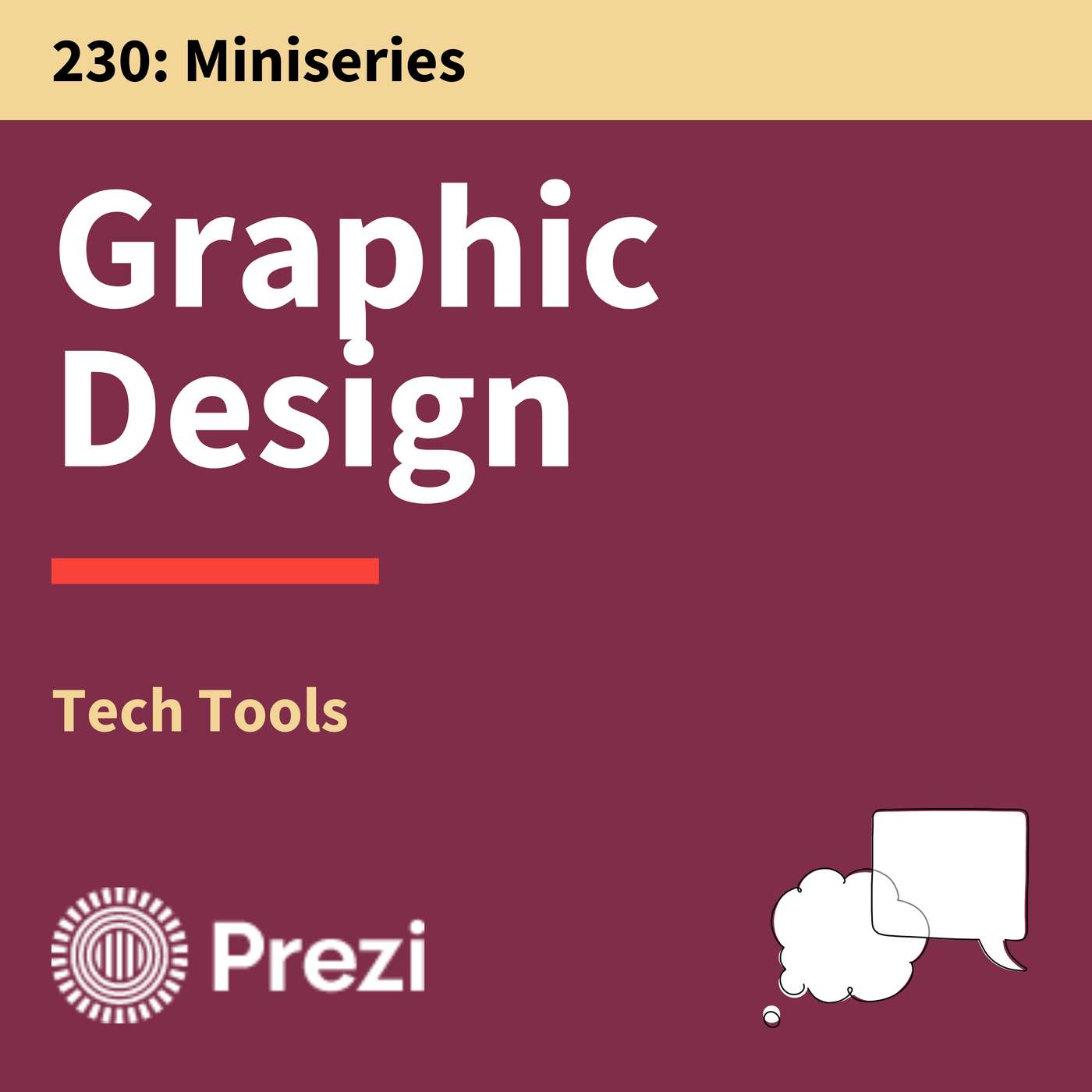 230. Tech Tools: Use Visuals to Your Advantage
230. Tech Tools: Use Visuals to Your AdvantageFrom 🇺🇸 Think Fast Talk Smart: Communication Techniques, published at 2025-09-18 13:00
Transform how you communicate with tools that make your message stick.Clear communication isn’t just about sharing information — it’s about making ideas stick. That’s why Yuhki Yamashita, Chief Product Officer at Figma, believes the key to effective collaboration lies in turning complex concepts into simple, memorable visuals.For years, Figma has been reshaping the way teams brainstorm, design, and build together — making it easier than ever to bring ideas to life in real time. In this episode of the Think Fast, Talk Smart Tech Tools miniseries, host Matt Abrahams talks with Yamashita about how visuals facilitate shared understanding, why frameworks enhance team communication, and how to craft insights that people naturally remember and reuse.In addition to insight-packed discussions, this miniseries explores innovative tools that enhance the way we communicate and connect. Whether you want to make your presentations more memorable, craft stories that stick, or connect with your audience on a deeper level, these episodes will help you communicate with greater clarity, confidence, and impact.Episode Reference Links:Yuhki YamashitaEp.227 Tech Tools: Move Your Audience By Moving Through Your Presentation Connect:Premium Signup >>>> Think Fast Talk Smart PremiumEmail Questions & Feedback >>> [email protected] Transcripts >>> Think Fast Talk Smart WebsiteNewsletter Signup + English Language Learning >>> FasterSmarter.ioThink Fast Talk Smart >>> LinkedIn, Instagram, YouTubeMatt Abrahams >>> LinkedInChapters:(00:00) - Introduction (01:16) - Figma Elevator Structure (02:07) - Joining Figma (03:17) - The Power of Visual Storytelling (04:36) - Creating Shared Meaning with Visuals (05:37) - Favorite Communicator (08:59) - Communication Hack or Tool (10:36) - Conclusion *******Thank you to our sponsors. These partnerships support the ongoing production of the podcast, allowing us to bring it to you at no cost.Try Prezi today and get 25% off exclusively at prezi.com/thinkfast.
-
 229. Rethinks: How to Speak Successfully When You’re Put on the Spot
229. Rethinks: How to Speak Successfully When You’re Put on the SpotFrom 🇺🇸 Think Fast Talk Smart: Communication Techniques, published at 2025-09-16 13:00
To celebrate its second anniversary, we revisit our favourite tools and tips from Matt’s book, Think Faster, Talk Smarter.Original executive producer Jenny Luna turns the tables and interviews host and strategic communications lecturer Matt Abrahams about his bestselling book, Think Faster, Talk Smarter: How to Speak Successfully When You're Put on the Spot. To celebrate the book’s second anniversary, this special Rethinks episode dives into Matt’s most practical tips, powerful frameworks, and mindset shifts to help you speak with confidence in any spontaneous situation. From managing anxiety to structuring your thoughts on the fly, it’s filled with tools to help you become a more effective communicator.Episode Reference Links:Jenny LunaThink Faster Talk Smarter Ep.10 High-Stakes Communication: How to Manage Anxiety When Speaking in Front of OthersEp.112 From Mistakes to "Missed Takes"Ep.107 Think Faster, Talk Smarter: How to Speak Successfully When You're Put on the Spot Connect:Premium Signup >>>> Think Fast Talk Smart PremiumEmail Questions & Feedback >>> [email protected] Transcripts >>> Think Fast Talk Smart WebsiteNewsletter Signup + English Language Learning >>> FasterSmarter.ioThink Fast Talk Smart >>> LinkedIn, Instagram, YouTubeMatt Abrahams >>> LinkedInChapters:(00:00) - Introduction (03:09) - Defining Spontaneous Speaking (03:59) - Origins of Matt’s Interest (04:50) - The Six-Step Methodology (05:35) - Shifting Your Mindset (09:45) - Practical Structures for Speaking (12:00) - The “F-Word” of Spontaneous Speaking (13:33) - Communication Lessons from Martial Arts (14:53) - The Karate Pants Story (16:49) - Hosting 100 Episodes (18:04) - On-the-Spot Challenges (24:40) - Conclusion ********Thank you to our sponsors. These partnerships support the ongoing production of the podcast, allowing us to bring it to you at no cost.Strawberry.me. Get 50% off your first coaching session today at Strawberry.me/smart
-
 228. Negotiate Your Way to Success: Empathy, Mirroring, and Labeling
228. Negotiate Your Way to Success: Empathy, Mirroring, and LabelingFrom 🇺🇸 Think Fast Talk Smart: Communication Techniques, published at 2025-09-09 13:00
Be ready, stay grounded, and communicate clearly — no matter what’s at stake.Communicating under pressure isn’t just a useful skill — it can be the difference between escalation and resolution. For Chris Voss, former FBI hostage negotiator and CEO of The Black Swan Group, it’s a daily discipline built on empathy, self-regulation, and intentional listening. In this expanded conversation from our Spontaneous Speaking miniseries, Voss offers a rare window into the mindset and methods that helped him show up calm, focused, and adaptable when the pressure is sky-high.“Emotional intelligence is an insane accelerator to outcomes,” Voss shares, explaining how empathy, tone, and timing can shift the direction of any conversation. He breaks down techniques like labeling and mirroring, explores how to use silence and word choice strategically, and explains why overthinking can be just as risky as acting too fast. From gut-level pattern recognition to tactical use of voice, Voss shows how communication becomes more impactful when we’re not trying to control — but to connect.In this episode of Think Fast, Talk Smart, Voss and host Matt Abrahams dive into how negotiation techniques developed for life-or-death situations can be applied far beyond them — offering powerful takeaways for anyone who needs to think clearly under pressure, stay agile in the moment, and communicate effectively when it matters most.Episode Reference Links:Chris Voss Chris’s Book: Never Split the Difference Ep.197 Prep or Perish: Mastering In-the-Moment Communication (1 of 3)Ep.198 Pause and Effect: Mastering In-the-Moment Communication (2 of 3)Ep.199 Blunder Pressure: Mastering In-the-Moment Communication (3 of 3)Ep.203 No Script, No Problem: Final Secrets to Speaking Under Pressure (Bonus) Connect:Premium Signup >>>> Think Fast Talk Smart PremiumEmail Questions & Feedback >>> [email protected] Transcripts >>> Think Fast Talk Smart WebsiteNewsletter Signup + English Language Learning >>> FasterSmarter.ioThink Fast Talk Smart >>> LinkedIn, Instagram, YouTubeMatt Abrahams >>> LinkedInChapters:(00:00) - Introduction (02:35) - Path to Hostage Negotiation (03:27) - Power of Emotional Intelligence (04:45) - Staying Calm Under Pressure (05:55) - Mental Prep & Mindset (07:03) - Trusting Your Gut (07:43) - Avoiding Overthinking (08:46) - Flexibility in Negotiations (10:00) - Listen More, Talk Less (10:16) - Labeling & Mirroring (12:36) - Tone Shapes Impact (13:51) - The Final Three Questions (18:53) - Conclusion ********Thank you to our sponsors. These partnerships support the ongoing production of the podcast, allowing us to bring it to you at no cost.Strawberry.me. Get 50% off your first coaching session today at Strawberry.me/smart
-
 227. Tech Tools: Move Your Audience By Moving Through Your Presentation
227. Tech Tools: Move Your Audience By Moving Through Your PresentationFrom 🇺🇸 Think Fast Talk Smart: Communication Techniques, published at 2025-09-04 13:00
Transform how you communicate with tools that make your message stick.Great communication isn’t just about what you say — it’s about what your audience remembers. That’s why Jim Szafranski, CEO of Prezi, believes that visuals and storytelling are key to making ideas stick.For more than 15 years, Prezi has been reimagining the way we share information, helping communicators move beyond static slides and into dynamic, memorable experiences. In the first episode of the Think Fast, Talk Smart Tech Tools miniseries, host Matt Abrahams talks with Szafranski about why visuals are so powerful for retention, how non-linear storytelling can make presentations more engaging, and the role AI now plays in shaping the stories we tell.In addition to insight-packed discussions, this miniseries explores innovative tools that enhance the way we communicate and connect. Whether you want to make your presentations more memorable, craft stories that stick, or connect with your audience on a deeper level, these episodes will help you communicate with greater clarity, confidence, and impact.Episode Reference Links:Jim SzafranskiPrezi Connect:Premium Signup >>>> Think Fast Talk Smart PremiumEmail Questions & Feedback >>> [email protected] Transcripts >>> Think Fast Talk Smart WebsiteNewsletter Signup + English Language Learning >>> FasterSmarter.ioThink Fast Talk Smart >>> LinkedIn, Instagram, YouTubeMatt Abrahams >>> LinkedInChapters:(00:00) - Introduction (01:18) - Prezi Elevator Structure (02:09) - The Power of Visuals in Storytelling (04:12) - Making Complex Ideas Simple (06:22) - When to Use Visuals (09:01) - Advantages of Non-Linear Storytelling (11:26) - AI’s Role in Visual Communication (14:22) - Favorite Communicator (15:37) - Communication Hack or Tool (17:28) - Conclusion *******Thank you to our sponsors. These partnerships support the ongoing production of the podcast, allowing us to bring it to you at no cost.Try Prezi today and get 25% off exclusively at prezi.com/thinkfast.
